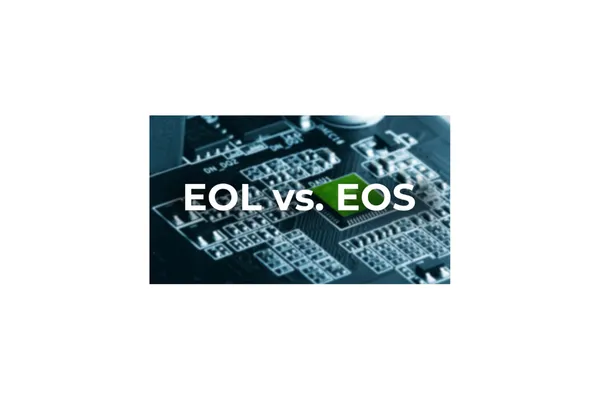
Is my equipment end of live or support?
End of Life vs. End of Service Life: What SMBs Need to Know Before Tech Chaos Hits
Let’s face it: tech lingo can feel like alphabet soup. But here’s one pair of acronyms you can’t afford to ignore—EOL (End of Life) and EOSL (End of Service Life). Think of these like expiration dates for your hardware and software, except instead of sour milk, you’re left with security risks, downtime, and potential tech meltdowns.
If you’re a small or medium-sized business trying to keep operations smooth and costs in check, understanding these terms is more than geek-speak—it’s smart business.
And yep, we’ll even talk about something you probably use every day: Windows 10 (spoiler alert—its EOL is creeping up fast). So buckle up buttercup, because this is your ultimate, no-nonsense, occasionally funny guide to surviving tech obsolescence.
Wait... What Exactly is "End of Life"?
End of Life (EOL) is when a manufacturer stops producing or selling a product. It doesn’t mean your server will suddenly catch fire—it’ll still work. But updates? Feature improvements? Bug fixes? Sayonara.
For example, once a product reaches EOL:
No more software patches or cool new features.
Compatibility slowly fades like your favorite pair of jeans.
Manufacturer support begins to ghost you.
🚨 Real World Example: Windows 10, the operating system millions of businesses depend on, is officially hitting EOL on October 14, 2025. After that, no more updates from Microsoft unless you pay for pricey Extended Security Updates (ESUs)—and even those are temporary.
👉 Learn more here: Microsoft's announcement on Windows 10 End of Life
And What About End of Service Life (EOSL)?
EOSL is the next—and scarier—stage. It’s when even the support gets pulled. No help desk, no security updates, no patches. You’re flying solo.
This is the part where your IT guy starts sweating, because:
If something breaks, the manufacturer won’t fix it.
If there’s a security hole, it stays wide open.
If hackers find it, they’re throwing a party on your network.
Think of EOSL as your tech running on borrowed time... with no backup parachute.

Why Should Your Business Care?
You might be thinking, “Okay, but if it still works, why replace it?”
Because:
Security vulnerabilities become ticking time bombs.
Compliance risks can lead to fines, especially in regulated industries.
Downtime costs money—lots of it.
Compatibility issues can cripple new integrations.
And don't forget the Windows 10 End of Life bombshell. If you’ve got Windows 10 machines humming away, you're on a countdown clock. After Oct 2025, you’ll be vulnerable to threats and won't get vital patches unless you pony up for Microsoft’s extended support.
💡 Hot tip: Start evaluating your Windows 10 environment now. Not sure how? Reach out to us at IT-Necessity—we help businesses like yours migrate safely and affordably.
What Should You Do Before It’s Too Late?
Take inventory
Find out which devices and software are approaching EOL or EOSL. If you're still running Windows 10 or an old server OS, it’s time to make a plan.Set a tech refresh strategy
Don't wait until things break. Transition smoothly with a proactive approach. Need help? We’re your tech GPS.Evaluate replacement options
Consider upgrades, cloud alternatives, or newer supported hardware. It’s cheaper in the long run than scrambling after a breach.Use third-party support (when appropriate)
If you’re not ready to retire some gear, third-party maintenance can buy you time. But tread carefully—it’s not a forever fix.Train your team
Old systems come with quirks. Make sure your staff knows what’s changing and when.Partner with a reliable MSP or consultant like IT-Necessity.
Hey, that’s us! Whether it’s planning for Windows 10 EOL or building your upgrade roadmap, IT-Necessity is here to help you avoid surprises and sleep better at night.
Let’s Talk Windows 10—The Clock is Ticking ⏰
Microsoft has officially announced the End of Life for Windows 10 on October 14, 2025. If your business still runs on Windows 10 Pro or Home, you’ll need a strategy yesterday.
You can upgrade to Windows 11 (assuming your devices are compatible).
Or purchase extended support (not ideal and definitely not cheap).
Or better yet, let IT-Necessity evaluate your environment and map a smarter migration.
👉 Check out our article: What Windows 10 EOL Means for Small Businesses
Final Thoughts (And A Friendly Nudge)
Technology is like milk—it doesn’t age gracefully. Whether it’s Windows 10 facing EOL or your legacy server creeping into EOSL territory, ignoring it only leads to pain.
The good news? You’re not alone. At IT-Necessity, we specialize in helping small and medium-sized businesses stay ahead of tech risks without breaking the bank. We’ll help you build a plan, budget smartly, and avoid late-night IT emergencies.
💬 Need help mapping your next steps?
Contact us today or shoot us a quick message. Your future self (and your team) will thank you.
Let’s Talk Windows 10—The Clock is Ticking ⏰
Microsoft has officially announced the End of Life for Windows 10 on October 14, 2025. If your business still runs on Windows 10 Pro or Home, you’ll need a strategy yesterday.
You can upgrade to Windows 11 (assuming your devices are compatible).
Or purchase extended support (not ideal and definitely not cheap).
Or better yet, let IT-Necessity evaluate your environment and map a smarter migration.
🎥 Still confused? Watch this short video that breaks it down in plain English: